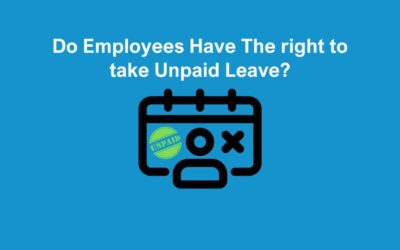In these uncertain and difficult financial times, many employers are facing significant financial pressures and are looking for ways to cut costs. Redundancies might seem like an immediate solution to reduce headcount and expenses. However, it is crucial to explore alternatives to redundancy before reaching this conclusion. Taking the time to consider other options can help preserve jobs, maintain morale, and protect the long-term stability of your organisation.
Redundancy is a tried and tested approach for reducing headcount and costs. However, there are many disadvantages to making redundancies within your business, such as – losing experienced and skilled staff, impact on team morale, risks of tribunal and also grievance claims. Before beginning any consultation process, here are some alternatives to compulsory redundancies that we suggest:
What Are the Alternatives to Redundancy?
Employers have a legal and moral responsibility to consider all options before making redundancies. Exploring alternatives can foster goodwill, reduce costs, and retain valuable skills within your organisation. Here are effective strategies to explore:
Job sharing or Reduced Working Hours
Employers can ask for volunteers for job shares. This arrangement allows two (or more) employees to split a full-time job between them. An agreement between the employer and the relevant employees is made regarding hours, working days and how the role will be managed. This will evidently cut costs for the business without having to make that difficult decision.
Offering employees reduced working hours can also be great alternatives to redundancy. This includes options like:
Short-time working: Employees work fewer hours temporarily.
Part-time arrangements: Transitioning full-time roles into part-time positions.
This approach allows businesses to cut costs while retaining skilled workers for future growth. In order to mitigate any risk of constructive dismissal claims or breach of contract, you must ensure that the employee also consents to any change to their contract of employment.
Retraining and Redeployment
Investing in retraining employees for new roles within the organisation can save jobs while addressing skill shortages. Redeployment allows businesses to match current employees with positions that better fit organisational needs.
Pay / Bonus / Staff Allowance Freeze
This is not a popular choice however it may be a more preferable alternatives to redundancy. Many organisations have a pay and/or bonus review each year. However, that doesn’t necessarily mean a pay rise must be given. Enforcing a salary and/or bonus freeze can result in significant savings for any business. Furthermore, a pay freeze would typically only be for a period of time, usually for 12 months or until the next pay review.
Reviewing a reduction of staff allowances, such as a working from home allowance, or mileage allowance is another good way of reducing costs. Ensure any pay/bonus/staff allowance freezes are carried out fairly as only freezing for some employees may result in unlawful discrimination on the basis of age, race, sex, and disability. It is also important to check that staff do not have any contractual right to an annual pay review or monthly allowance. If you are considering implementing these alternatives to redundancy, ensure the appropriate consent is obtained.
It’s essential that all employees receive at least the minimum wage for their age group. If your employee falls in to this category, you must increase their salary accordingly.
Reduce or Restrict Overtime
Reducing or restricting overtime can be an effective way to reduce business costs. However, some employees rely on overtime pay as additional pay. In addition, any decision to reduce or restrict should be carefully reviewed. It is also important to consider whether there is a contractual entitlement to overtime, and if so, consent must be obtained to any change of contract.
Early Retirement
Although this may seem like one of the perfect alternatives to redundancy, you cannot force anyone into early retirement – it must be the employee’s choice. Offering early retirement could result in roles becoming available within the business. In addition, this could then be taken up by employees who may have been at risk of redundancy.
Voluntary Redundancies
Before considering compulsory redundancies, ask for volunteers. Offering enhanced redundancy packages or early retirement schemes may attract employees willing to leave. This can reduce the emotional toll of forced redundancies.
Sabbaticals and Career Breaks
Offering unpaid sabbaticals or career breaks can be a creative way to reduce payroll costs. Employees benefit from time away for personal pursuits, while employers gain flexibility to reallocate resources.
Make savings elsewhere in the business
Reviewing business costs on a regular basis is always good practice and could help you find alternatives to redundancy. Before deciding on redundancies, we would encourage you look at how budgets can be cut elsewhere. An example of this could be that your employees work from home rather than paying out on rent for an office. Could entertainment, gift and Christmas party budgets be reduced? Can contracts with suppliers for goods and services be lowered? Look at what other outgoings and budgets you have that could be reduced.
The Importance of Consultation and Communication
Before implementing any of these solutions, employers must consult with staff and, where applicable, unions. Transparent communication fosters trust, ensuring employees understand the rationale behind decisions and remain engaged throughout the process.
Benefits of Considering Alternatives to Redundancy
- Preserving Talent: Retaining experienced employees avoids the time and expense of rehiring once conditions improve.
- Boosting Morale: Showing commitment to employees fosters loyalty and morale.
- Maintaining Reputation: Demonstrating a thoughtful approach to workforce management enhances employer branding.
Frequently Asked Questions
Q: What legal obligations do employers have when considering redundancy alternatives?
Employers must demonstrate that they’ve considered all reasonable alternatives before proceeding with redundancies. This is part of the statutory redundancy consultation process in the UK.
Q: Are alternatives to redundancy cost-effective?
Yes, many options, such as reduced working hours or retraining, save money while avoiding the high costs associated with redundancy payments and rehiring.
Q: How can employers ensure employees accept measures like pay cuts or reduced hours?
Engaging in open, honest communication and demonstrating the benefits of these measures for the organisation’s survival are essential to gaining employee support.
Redundancy Support From The HR Booth
If you have explored all these alternatives and still feel like the only option is to go through a redundancy process, our team are here to help. Key ways we can support includes:
- Expert guidance on managing the redundancy process in compliance with employment law.
- Assistance with planning and implementing redundancy procedures tailored to your business.
- Support with employee consultation to ensure fairness and transparency.
- Practical advice on sensitive and effective communication with affected employees.
- Strategies to minimise disruption to your business during this challenging time.
- Ongoing support to help maintain a professional and empathetic approach throughout the process.
Contact Us
There are many more alternatives to redundancy that we can recommend and give advice on. Please contact our outsourced HR Consultants if you would like any further information on making redundancies or implementing alternatives to avoid redundancies. We will ensure you follow the correct processes at all times to mitigate any risks for your business.







